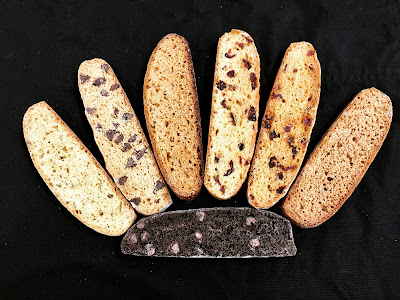The Living Legacy of Sourdough: A Journey Through Time and Flavor
In the world of artisan bread, sourdough holds a special place—a perfect balance of history, science, and flavor. Few bakeries can claim the deep heritage of a sourdough starter quite like ours, which traces its roots back to 1893, in the bustling mining town of Cripple Creek, Colorado. At the height of the gold rush, this starter fed the miners who worked tirelessly to unearth fortune from the rugged Rocky Mountains. Today, that same starter, with its rich and complex microbiome, continues to thrive, carrying with it the flavors of history and the nutritional benefits of generations.
The Historical Journey of Our Sourdough Starter
Our sourdough starter’s journey is as remarkable as the bread it produces. Thought to have originated in Europe, this culture traveled across the Great Plains with pioneers heading westward during America’s manifest destiny. Oral history tells us that it made its way to California, a hub of gold rush dreams, before settling back in Cripple Creek. By the late 19th century, Cripple Creek was home to 10,000 miners working the massive lode, and the town bakery became a vital resource for nourishing this hard-working community.
We are fortunate to have a documented paper trail* that details this starter’s movement from Cripple Creek and its subsequent preservation. Passed down through bakers who understood its value, this starter has been nurtured and sustained, a living link to the past.
The Science of Sourdough Starters: A Living Ecosystem
Sourdough starters are living ecosystems of wild yeast and lactic acid bacteria (LAB). Unlike commercial yeast, which is a single strain of Saccharomyces cerevisiae, sourdough starters are diverse communities of microorganisms, including various strains of yeast and LAB such as Lactobacillus sanfranciscensis. This diversity is key to the unique flavor and health benefits of sourdough bread.
What sets an old starter apart is its maturity. Over generations, these microorganisms adapt to their environment, evolving into a stable and robust culture. Factors such as the local climate, the flour used, and even the tools and hands of the baker contribute to the unique microbial signature of a starter. In the case of our Cripple Creek starter, its long history has allowed it to develop a distinctive complexity of flavor that cannot be replicated by younger or commercially-produced cultures.
The Benefits of an Old, Well-Fed Starter
1. Flavor Complexity
An older starter produces bread with unparalleled depth of flavor. Over time, the microbial community in a starter becomes more diverse and balanced, resulting in a harmonious interplay of tangy, nutty, and umami notes. The long fermentation process also enhances these flavors, creating bread that tells a story with every bite.
2. Superior Fermentation Power
Starters that have been nurtured for generations are resilient and active, with yeasts and bacteria that have adapted to thrive under various conditions. This means better leavening power, a more consistent rise, and a softer crumb.
3. Improved Digestibility
The bacteria in sourdough starters play a crucial role in breaking down gluten during fermentation, making the bread easier to digest for many people. They also produce organic acids that lower the bread’s glycemic index and inhibit the growth of spoilage organisms, extending shelf life naturally.
4. Nutritional Advantages
Sourdough fermentation unlocks nutrients in wheat, such as B vitamins, minerals, and antioxidants, that are otherwise difficult to absorb. The LAB in the starter reduces phytic acid, an anti-nutrient found in grains, allowing the body to better access these nutrients.
5. The Contribution of Generational Wheat
Each time a starter is fed, it is introduced to a new batch of flour, which carries its own microbial life and nutritional profile. Over generations, these subtle changes shape the starter’s microbiome. For our Cripple Creek starter, this means over a century of interaction with evolving strains of wheat, contributing to its unique microbial diversity and performance.
Sourdough as a Reflection of Place and Time
The beauty of sourdough lies in its ability to capture the essence of its environment. A starter acts like a sponge, absorbing the characteristics of its surroundings— the flour, the water, the air, and even the hands of the baker. For our Cripple Creek starter, this means it carries within it the essence of the Rocky Mountains, the pioneering spirit of the American West, and the hard work of generations of bakers who have kept it alive.
Preserving and Celebrating the Past
In an age where convenience often overshadows tradition, our Cripple Creek sourdough starter stands as a testament to the enduring value of heritage. Every loaf it helps to create is not just bread; it’s a piece of history, a connection to a time when food was deeply personal and profoundly meaningful. By continuing to feed and use this starter, we honor the past while nourishing the present.
Conclusion
Sourdough is more than a method of making bread; it is a living symbol of community, resilience, and tradition. Our Cripple Creek starter, with its remarkable journey from Europe to Colorado and beyond, is a story of survival and adaptation that mirrors the human spirit. As bakers, we are its caretakers, ensuring that its legacy continues to enrich lives for generations to come.
By choosing sourdough made with an old, well-fed starter, you’re not just enjoying a delicious and nutritious product—you’re part of a centuries-old tradition that celebrates the art and science of breadmaking.
- Sourdough Culture written by Eric Pallant available on Amazon. (We owned and ran Creative Crust Bakery where Eric apprenticed, for research for his book.)














